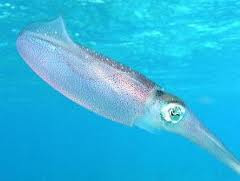
In general, mollusks have 3 body regions: a head, a visceral mass, and a "foot." The head contains the sense organs and "brain," while the visceral mass contains the internal organs. The "foot" is the muscular lower part of the body which is in contact with the substrate. Mollusks usually have a shell (although some do not). Mollusks also have an extension of the body wall called the mantle. This portion of the animal's anatomy is responsible for secreting the shell. The mantle encloses the mantle cavity which contains the Ctenidia (gills), anus and excretory pores.

Many mollusks have a radula, a tongue of sorts, which is rough like sandpaper and is used to rasp away at food. The radula is made of a hard material called chitin, the same material of which Arthropod exoskeletons are made. In addition, some Mollusk radulae are impregnated with magnetite to give them superior wear characteristics.
No comments:
Post a Comment